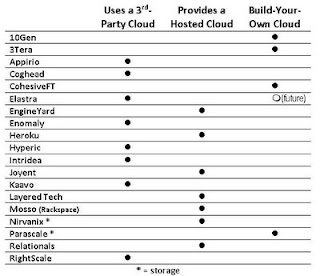For some time, Egenera's been known in the somewhat rarified circles of high-performance, mission-critical computing for Wall Street, Government & Service Providers. We've recently unbundled our infrastructure orchestration & management software, and are now shipping it on Dell hardware as well. Because the software is infrastructure, I/O and network centric, it's highly complementary to any form of virtualization:
Customers will begin to demand tools that manage not just virtual machines, but that integrate the management of all forms of virtualization - OS, I/O, network and storage - and do so across multi-vendor technologies. When coupled with network and storage virtualization, virtual machines offer sophisticated forms of high availability, disaster recovery, and service migration across all forms of platforms. When managed together, these new levels of abstraction will enable true utility computing, "cloud" style elastic compute services, and forms of IT services that are fully driven by business priorities rather than technical convenience.The elegant aspect to this form of management is that it's transparent to the form of virtual or physical applications it supports. Wouldn't it be nice to have a unified infrastructure management system (yes, with HA and DR) across all physical & virtual environments?














